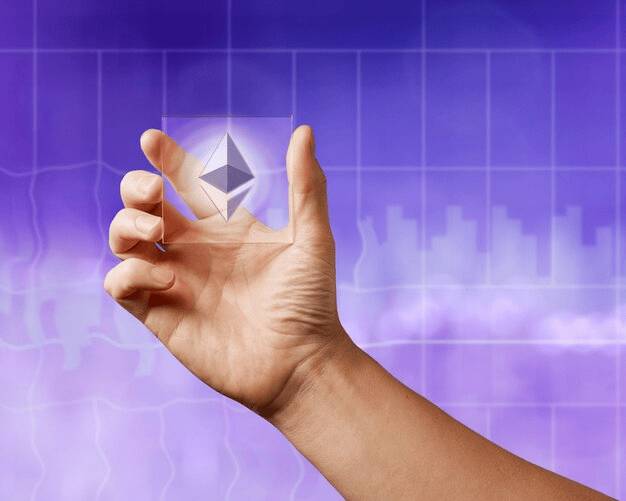In recent years, blockchain technology has grown tremendously. Smart contracts were first made available to the public through several dozen Ethereum platform apps. Promising smart contract initiatives such as Aave, Compound, and Open Sea are drawing interest from investors, institutions, and blockchain developers.
Read this post if you want to create your project using a token to finance it and you already have a dapp development company idea in mind.
The Blockchain Platform Ethereum
Developers can program and execute smart contracts on blockchain networks. The largest and first blockchain network, Ethereum allows you to run any software on it by executing arbitrary code.
The Ethereum Blockchain is a distributed infrastructure that lets you use smart contracts to finish projects. It functions similarly to the iOS and Android platforms for mobile apps.
Make your cryptocurrency
You may make a tradable token that can be used as a new kind of money with Ethereum. Tokens generated with the Ethereum platform can be used with any Ethereum blockchain wallet by using a common coin API.
Create online organizations
To create an organization based on blockchain technology, you can construct a smart contract. At that point, you can expand your organization’s membership and activate voting procedures. Voting is open to all members of your organization, and the smart contract will automatically execute if the necessary amount of votes are cast.
Construct dApps
Ethereum gives programmers the ability to create transparent, fault-tolerant, and safe decentralized applications that do away with middlemen.
Raise money
Ethereum smart contracts can be used for fundraising as well. You can write a deadline and a smart contract with Ethereum. Should you fall short of the target, all funds will be instantly refunded to contributors without any questions asked or commissions charged.
To begin, a few fundamentals.
Decentralized applications (DApps)
DApps, or decentralized apps, are programs that operate on the blockchain. Stated differently, they employ a peer-to-peer network of interconnected computers, or nodes, for communication. The largest benefit is that the information is kept on what is known as a public ledger, which securely and openly records all information and ensures that it cannot be manipulated. Ethereum DApps are composed of the frontend, which is visually appealing, and the backend, which is the functionality, much like traditional centralized programs. The primary distinction is that blockchain technology forms the basis of the backend. Smart contracts are the tools that can control and govern the blockchain system. This is the stage at which we will begin the creation process.
In the Ethereum ecosystem, tokens
stand for any tradeable and marketable commodities, including loyalty points, cash, in-game goodies, and more. This also means that your token will be instantaneously aligned with the Ethereum wallet and any other client or contract that follows the same standards since all tokens commonly implement some basic functions.
Smart contracts
All of our application’s business logic is stored in smart contracts. Simply said, smart contracts are blockchain-stored scripts that let users trade assets and money or carry out other user-to-user actions like voting without a central authority.
Technically speaking, they are standalone Solidity scripts that are assembled into JSON and sent to a specific blockchain address. Similar to how we can execute some logic by calling a RESTful API’s URL endpoint,
Using HttpRequest and Ethereum to call the compiled and deployed Solidity function, we can execute deployed smart contracts in the same manner at a specific address.
For a cost commensurate with the storage capacity of the contained code, smart contracts are added to the decentralized database. It can also be described as a group of codes that are kept on the blockchain network and specify terms that all parties to the contract must concur upon.
You can therefore create your coin that people can exchange using Smart Contracts by developing an Ethereum app.
Solidity
Solidity is an Ethereum-based programming language for smart contracts. It is comparable to the object-oriented programming language that makes use of classes and methods, and it was developed on top of the EVM. It is used to send and receive tokens and store states, but it may also be used to do any kind of computation. Solidity’s syntax is heavily influenced by C++, Python, and Javascript, allowing developers to quickly grasp its syntax.
How can an ERC20 token be introduced on Ethereum?
First of all, it’s a common misconception that Ethereum is the same as a cryptocurrency like Bitcoin. The main function of Ethereum is to enable users to create and execute apps on their blockchain like that of computer or tablet software. These apps can handle intricate financial operations or store and send data. Users now have control over their information thanks to this benefit.
Ethereum tokens, a native money similar to Bitcoin, fuel the Ethereum network. It enables other users to purchase your tokens, thereby becoming investors in your project.
Creating a prototype and improving your application
We hope you are not afraid after reading the given information. To start your project, you don’t need to be a designer, blockchain specialist, or coder.
Typically, the entire project launch process takes several months. For you, there are three important stages:
Idea generation for products
This is essential for all new projects. It’s important to understand both what and why you want to produce anything. Making a mental note of possible features before speaking with blockchain software developers is also a good idea.
launch of tokens
You build up smart contracts, perform marketing, and create the necessary paperwork. It is essential to project finance. The cryptocurrency industry may appear a little saturated, but if you have a solid product, an effective marketing strategy, and strong communication, that isn’t the case.
Development of applications
the section where the actual code is done. Your project (website, roadmap, GitHub documentation, and social media) is open to the public. You have already listed your coin on exchanges or dexes to raise money for its development.
Conclusion
Understanding the fundamentals of smart contracts, blockchain technology, and Ethereum tokens is necessary to create your own Ethereum decentralized application (DApp). DApps can be created for several uses, including platforms for fundraising, online groups, and cryptocurrency creation. Ethereum’s programming language, Solidity, allows developers to create the logic required for their DApps. The procedure comprises multiple months-long steps for idea generation, token launch, and application development. Despite the challenges, building a successful DApp in the current blockchain landscape is possible with a strong concept, efficient marketing, and cooperation with blockchain developers.
Must Check :- application development


